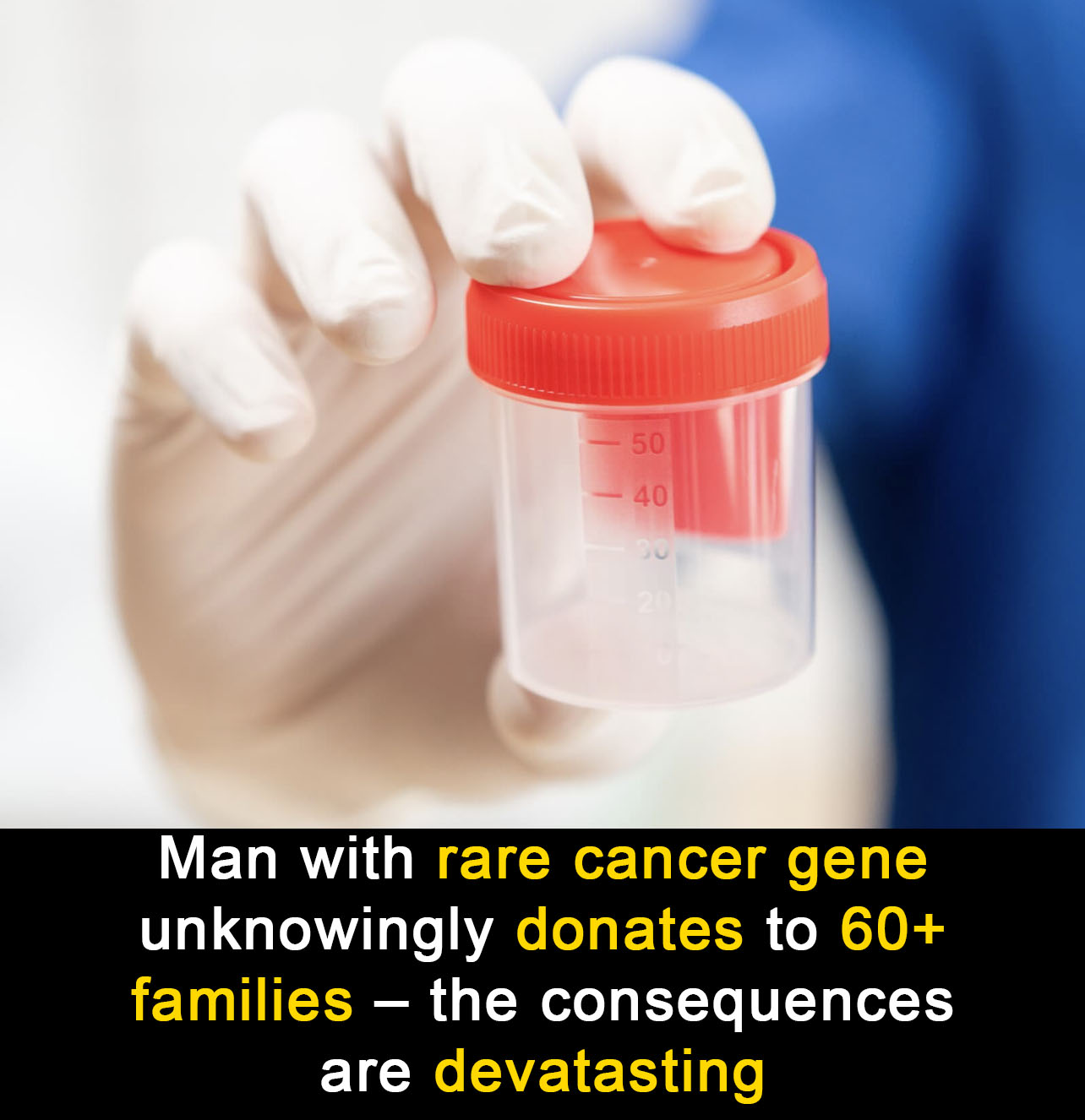Sperm donation, which began gaining popularity in the 1970s, has become a common method for couples struggling with fertility. However, as children conceived through sperm donation grow up, they sometimes seek answers about their biological origins. In a recent case, the consequences of one sperm donor’s unaware transmission of a rare cancer-carrying gene have led to a tragic revelation.
The Discovery of a Hidden Cancer Risk
A sperm donor, who unknowingly carried a rare genetic mutation linked to cancer, donated sperm that was used to conceive 67 children. The genetic variant in question, called TP53, is associated with a condition known as Li-Fraumeni syndrome (LFS), which significantly increases the risk of developing various cancers, including leukemia.
It wasn’t until two families who had used the same donor reached out to the fertility clinic that the devastating connection began to emerge. The families reported that their children had been diagnosed with rare cancers. Alarmingly, 10 of the 67 children conceived using this donor’s sperm have been diagnosed with cancer, while 20 others were found to carry the same dangerous gene mutation.
 Shutterstock.com
Shutterstock.com
The Role of the TP53 Mutation
The TP53 gene is critical for preventing tumors. A mutation in this gene can lead to the development of multiple types of cancer, often at a young age. People who carry this mutation are advised to undergo regular MRI and brain scans to monitor their health. At the time of the sperm donation in 2008, knowledge of this mutation was not widespread, and the donor had been considered in solid health. As a result, this information was not available to the fertility clinics or the families receiving the sperm.
Dr. Edwige Kasper, a biologist at Rouen University Hospital in France, analyzed the genetic variant using various databases and scientific tools. She concluded that the variant was likely cancer-causing and recommended that the children born from this donor receive genetic counseling.
Sperm Donation Limits and Genetic Screening
This case has highlighted a major concern regarding the lack of regulation in sperm donation. While some sperm banks, like the European Sperm Bank, limit donors to 75 donations per donor, there is no international standard. The European Sperm Bank, which was involved in this case, revealed that the donor had contributed sperm that led to the conception of 67 children. Although the sperm bank kept this data private, they confirmed that relevant clinics were informed of the situation.
The case raises questions about the need for stricter limits on sperm donations and better tracking systems. Dr. Kasper has called for a European law to establish a limit on the number of families a single donor can help. “We need to have a European limit on the number of births or families for a single donor,” she said. “Not every man has 75 children across Europe.”
Professor Nicky Hudson of De Montfort University also emphasized the importance of limiting sperm donations to a smaller number of families within one country to prevent the spread of genetic diseases. “The important issues at stake here relate to the large number of affected children,” she said, “which would be limited if only used within one country according to local limits.”
Reactions from the Sperm Bank and Experts
A spokesperson from The European Sperm Bank expressed their deep concern over the case, explaining that while the donor had been tested, “it is scientifically simply not possible to detect disease-causing mutations in a person’s gene pool if you don’t know what you are looking for.” The bank also reiterated its support for international limits on sperm donations and stated that they had proactively implemented their own limit of 75 families per donor.
The case underscores the need for better systems to track sperm donations, inform recipients of potential risks, and establish international guidelines to protect families from similar situations in the future.
Conclusion
This heartbreaking case serves as a stark reminder of the unforeseen risks involved in sperm donation. The families affected by this tragedy now face the difficult task of managing the health implications of a genetic condition they were unaware of. As this issue continues to unfold, there is an urgent need for international cooperation to create better guidelines and ensure the safety of those involved in the sperm donation process.
Our thoughts and prayers go out to the families affected by this tragic situation. Share this article to spread awareness about the importance of regulating sperm donations and protecting future families.


